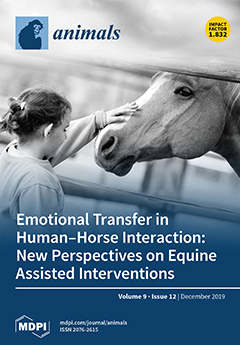The object of present study was to evaluate the effects of dihydroartemisinin (DHA) supplementation on the hepatic antioxidant capacity in IUGR-affected weaned piglets. Eight piglets with normal birth weight (NBW) and sixteen IUGR-affected piglets were selected. Piglets were weaned at 21 days. NBW and IUGR groups were fed a basal diet and the ID group was fed the basal diet supplemented with 80 mg/kg DHA for 28 days. The result indicated that compared with NBW piglets, IUGR-affected piglets increased (
p < 0.05) the concentration of malondialdehyde (MDA) and decreased (
p < 0.05) the serum activities of total superoxide dismutase (T-SOD), catalase (CAT), and glutathione peroxidase (GSH-Px). In addition, IUGR-affected piglets showed increased (
p < 0.05) hepatic concentrations of protein carbonyl (PC), 8-hydroxy-2’-deoxyguanosine (8-OHdG), and oxidized glutathione (GSSG), and an increased GSSG:GSH value. IUGR-affected piglets exhibited lower (
p < 0.05) activities of GSH-Px, T-SOD, total antioxidant capacity (T-AOC), and the concentration of glutathione (GSH). DHA supplementation decreased (
p < 0.05) the serum concentration of MDA and increased the serum activities of T-AOC, T-SOD, GSH-Px, and CAT. The ID group showed decreased (
p < 0.05) concentrations of MDA, PC, 8-OHdG, and GSSG, and a decreased GSSG:GSH value in the liver. The hepatic activity of T-SOD and the concentration of GSH were increased (
p < 0.05) in the liver of ID group. IUGR-affected piglets downregulated (
p < 0.05) mRNA expression of nuclear erythroid 2-related factor 2 (Nrf2), heme oxygenase 1 (HO-1), and CAT. DHA supplementation increased (
p < 0.05) mRNA expression of Nrf2, HO-1, GPx1, and CAT in the ID group. In addition, the protein expression of Nrf2 was downregulated (
p < 0.05) in the liver of IUGR-affected piglets and DHA supplementation increased (
p < 0.05) the protein content of Nrf2 and HO-1. In conclusion, DHA may be beneficial in alleviating oxidative damage induced by IUGR through the Nrf2/ARE signaling pathway in the liver.
Full article






